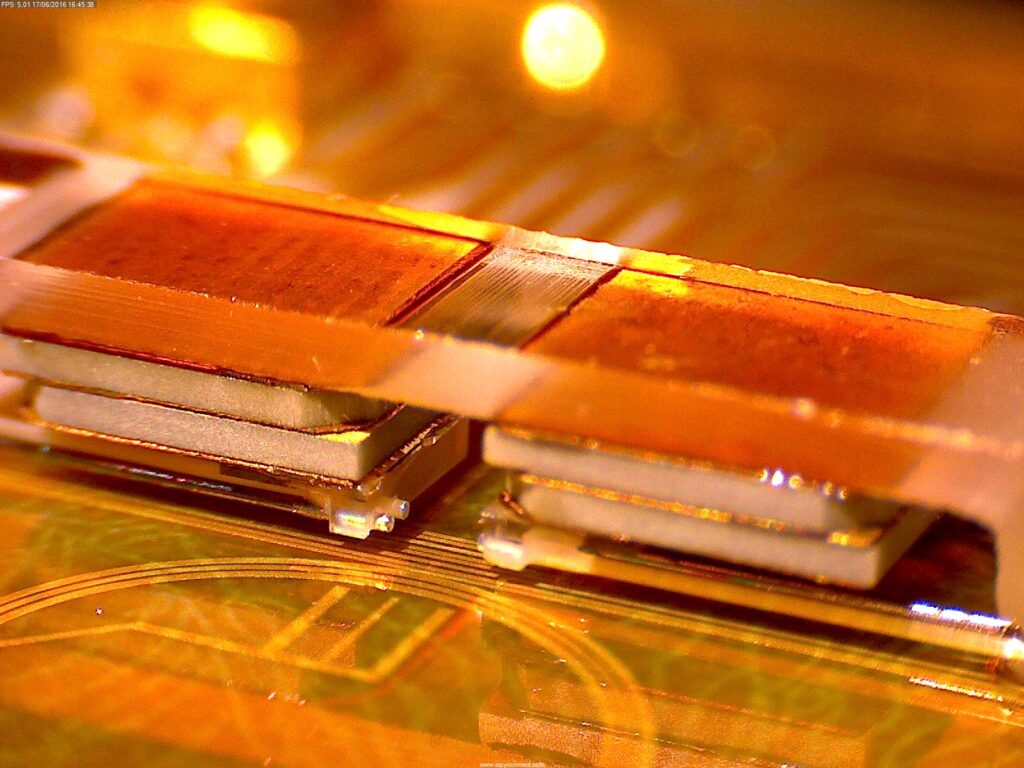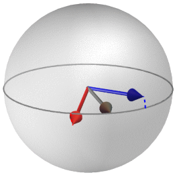
Typically, the performance of measurement devices is limited by deleterious effects such as thermal noise and vibration. Notable exceptions are atomic clocks, which benefit from the exquisitely stable properties of atoms and operate very near their fundamental limits. Driving devices to their physical limits will open new application spaces for civilian and defense activity. Indeed, many everyday applications already require exceptionally precise time and frequency standards enabled only by atomic clocks. The Global Positioning System (GPS), inertial navigation and telecommunication are key examples.
Thanks to (laboratory-size) atomic clocks, the second is the best realised SI unit and stunning tests of fundamental science are performed. In parallel to the search for ever higher precision, development goes towards small portable devices for mobile, in-the-field applications. Here, chip-scale atomic clocks present incredibly small size (~1 cm), but reach only moderate clock performance. Compact (litre-size) microwave clocks under development demonstrate stability down to 10-13 at 1s rivalling the traditional hydrogen-maser, but in a portable and much cheaper physics package. These are ideally suited for many civilian and defence applications, on earth and in space. Here, research can help to deploy their enormous potential and assure independence from foreign supply.
For a given atomic transition, the most efficient way of improving the clock stability is to increase the interrogation time. This is the reason for the revolutionising success of laser-cooling in metrology and has led to the construction of atomic fountain clocks and atom gravimeters. In these, the time of free fall is ~0.5 s. With the Trapped Atom Clock on a Chip (TACC), our LKB/SYRTE consortium has chosen a radically new approach, the interrogation of trapped atoms. In a first generation TACC we have validated the new concept through the discovery of interrogation times of up to 58s – a world first for neutral atoms. The current set-up reaches a very competitive clock stability of 5.8 10-13 at 1s and 6 10-15 at 30.000 s.
TACC combines the innovative techniques of atom chips and fiber Fabry-Pérot microcavities, thus we are taking a step towards the miniaturization of cold atom experiments. We will further conduct explorative studies on quantum non-destructive detection and quantum engineered spin squeezing, which will each for the first time test innovative fundamental physics approaches in a true metrology grade instrument. The expected result will put TACC in a leading position among all compact clocks and even rival the stability of the best atomic fountain clocks.
- Long-lived metrological spin squeezing

Atomic clocks and sensors are among the most precise measurement instruments in the world, but they can still be improved. Indeed, all of them so far use uncorrelated atoms, creating statistical noise called quantum projection noise which limits their performance once more mundane noise sources have been removed. It is known that this limit can be overcome if atoms are put into a quantum-correlated state called a spin-squeezed state, but the lifetime of such states produced in the lab used to be orders of magnitude shorter than what is needed for metrology-grade instruments. In a collaboration with SYRTE, we have now produced spin-squeezed states that live for almost a second – enough for a metrology-grade sensor.
Being able to conserve the fragile quantum state for such a long time also leads to new insights into its “real-life” properties – with surprising result: the clock signal produced by the state gets stronger over time, growing to more than 4 times its expected value. The effect is explained by extremely small interactions between the atoms – so small they remained invisible in the earlier, short-lifetime experiments. They conspire with the quantum correlation to amplify the coupling to the optical microcavity that is used for detection.
The microwave clock used in this experiment works in the regime of next-generation compact clocks for global navigation satellites, rising hopes for quantum-enhanced compact clocks in the near future.
These results are published in PRX Quantum 4, 20322 (2023).
